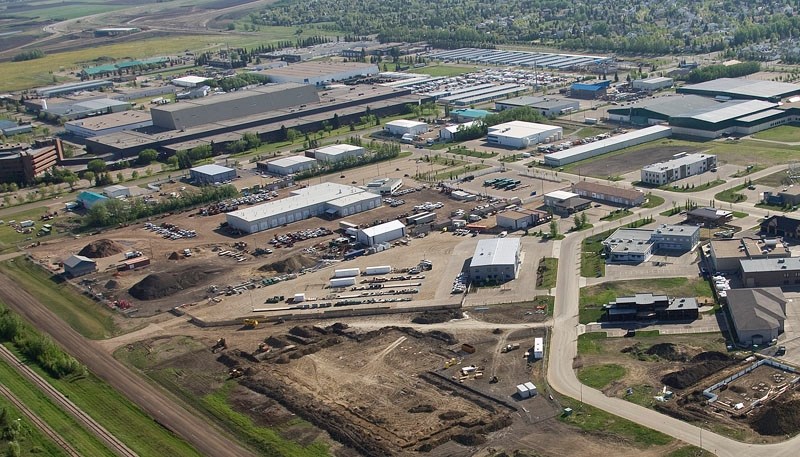The city needs nearly 362 hectares (900 acres) of industrial land to meet its economic development needs over the next 25 years, according to a new study released by the city.
This amount of land would provide 217 hectares (537 acres) of light industrial land plus open space, roads, rail lines and stormwater ponds, the report states.
The city hired a pair of consulting firms to do the Future Industrial Land Requirements Study to determine how much industrial land the city could attract in the next 20 to 25 years.
"This does not get us to 80-20," stressed business and tourism development director Larry Horncastle. "It will move us closer to sustainability because it will give us those benefits of having industry in town."
It has long been a goal in St. Albert to reach an 80-20 split between residential and non-residential tax assessment, which would see businesses shouldering more of the load for providing services in the city.
The city can be a more sustainable community by expanding its light industrial tax base, the report states. Such an expansion would improve the city's fiscal position and also strengthen the local employment base, it says.
"Before looking for corrective mechanisms, there must first be an attitude change that industrial development is important to the community's sustainability," the report states.
The report suggests that the city should have a five-year supply of serviced "shovel ready" land, in various sizes and zonings, available for sale at any given time.
For years various groups, such as Horncastle's department and the chamber of commerce, have been pushing for 700 acres of light industrial land while the planning department has said the city already has a 100-year supply.
"I'm not aware of anybody in our region that's done a study like this," Horncastle said. "We were never certain what we really needed or what we had."
The study determined that St. Albert has a supply of 67 hectares (165 acres) of designated vacant industrial land, the smallest inventory of a sampling of Capital region municipalities. As of March 2011 there were 16 vacant sites that were serviced and available for light industrial development, totalling 12 hectares (29 acres).
Most of the vacant industrial land in the city isn't "shovel-ready," sites that are the most in demand by businesses.
Working in St. Albert's favour is its location within one of the fastest growing regions in Canada, with good access to highways and rail lines, the report states. However, the city doesn't generate much employment, which has led to residents carrying the lion's share of the tax burden.
Also working against the city is the fact that St. Albert's industrial tax rates and offsite levy charges are second only to Edmonton in the Capital region, it says.
No question about industrial needs
For Horncastle, the report lays to rest the question of whether the city needs more light industrial land.
"Others will say we don't need it, we're quite fine as a residential community," he said. "What it does show is, if we do things right, this is how much industrial we should be able to attract."
City council will formally receive the report June 20 and will refer it to the St. Albert Chamber of Commerce and the St. Albert economic development advisory committee (SAEDAC) for input, said city manager Bill Holtby.
The city has made the study available for public viewing so other interested parties can review it and share their views during a public hearing that's scheduled for July 4. The 129-page report can be accessed at www.stalbert.ca/future-land-study.
Once council receives the report, it will go to the planning and development department as input to a subsequent analysis to determine where a future light industrial park could be located. That report is due by the end of the year.
The chamber of commerce is fully supportive of the first report, said chair Charlene Zoltenko.
"It reinforces what the chamber has been saying all along. The need [for more industrial land] is there and if we want to be a sustainable community, this is something we have to really consider," she said.
One of the most important points in the report is its call for a mix of land options, because St. Albert has typically only had small parcels available for industrial use, said SAEDAC chair Gilles Prefontaine.
"We're nowhere near where we need to be in terms of being shovel ready," Prefontaine said. "As our economy heats up we need to be there with available opportunities for business developers."
Coun. Malcolm Parker, who ran last fall on a platform that emphasized the need for economic development, said some of the points in the report made his heart sing. The key now is for the city to follow up the report with action, he said.
"You can't be half pregnant on this stuff. You're either going to do it or you're not," he said. "I'd be very disappointed if we take this document and three years from now we haven't done anything."




